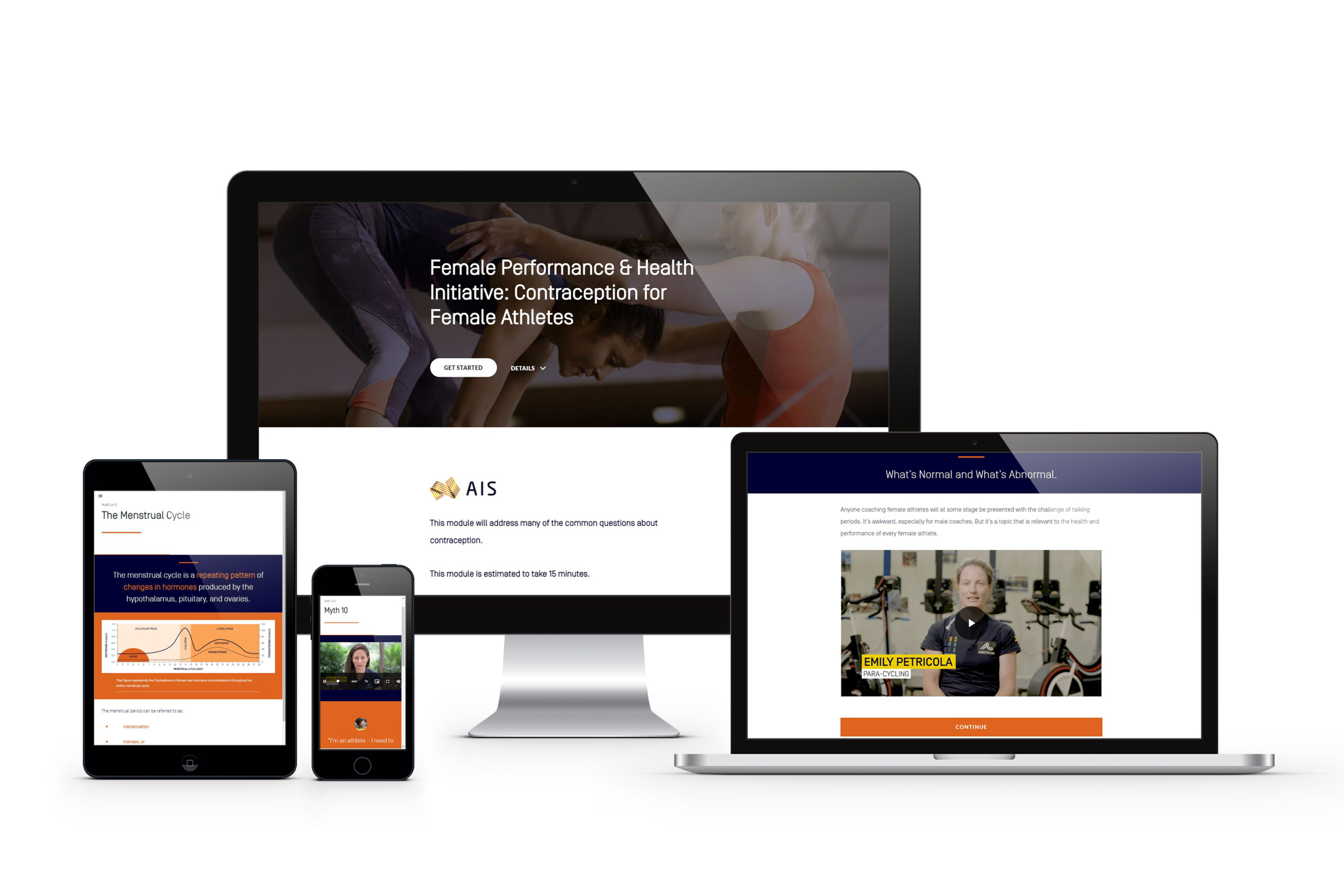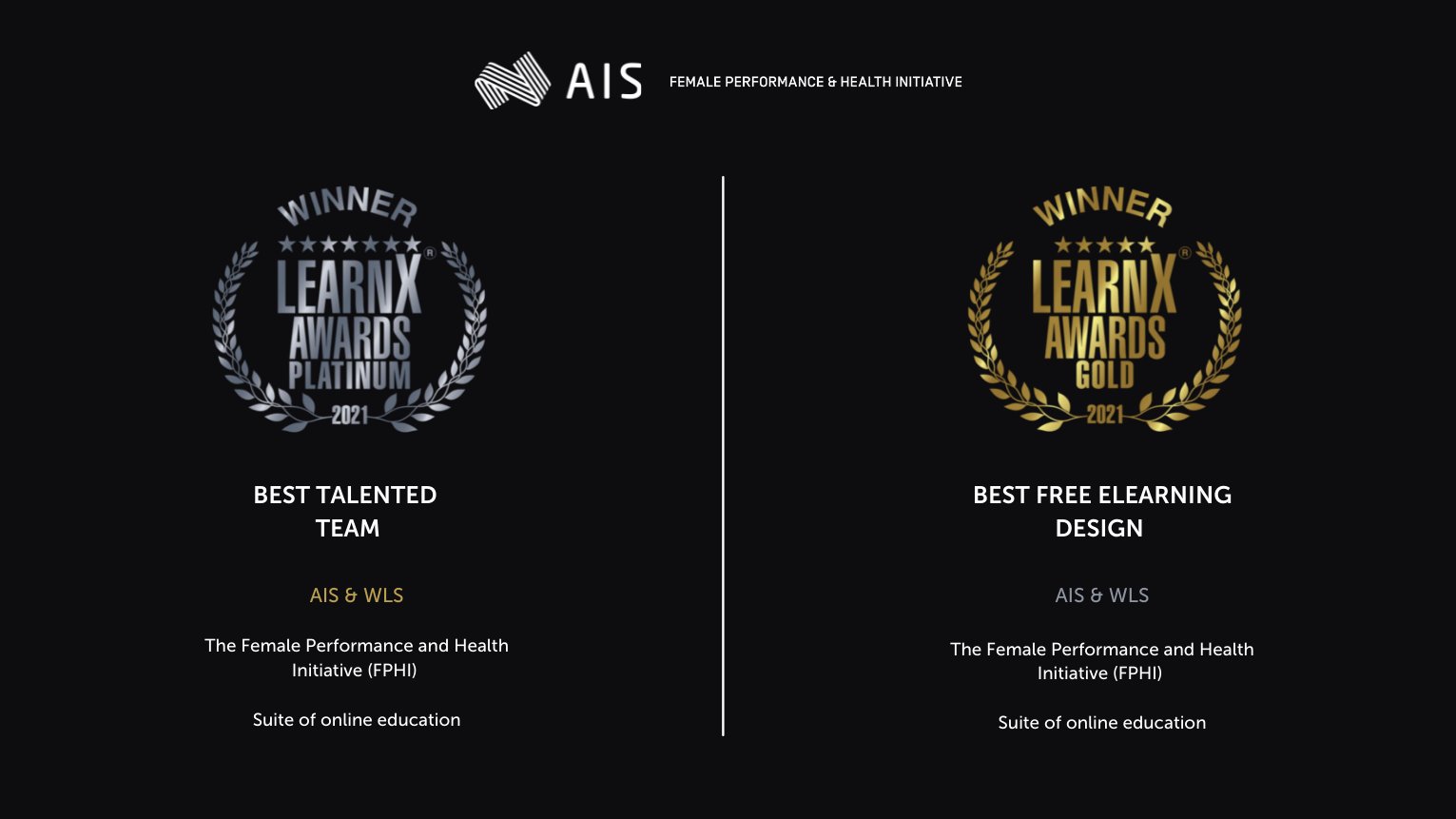Part of the BJSM’s Young Clinician Blog Series
MODULE: Considerations for Medical Practitioners managing Female Athletes (part of the AIS’ female performance and health initiative)
https://www.ais.gov.au/fphi/education
What does the module cover?
This online award-winning FREE module, provided by the Australian Institute of Sport, is aimed at healthcare professionals managing female athletes. The module is split into logical sections that consider multiple aspects unique to the health and performance of female athletes including:
- Female athlete-specific demands of competition and training
- Menstrual abnormalities such as amenorrhoea, menorrhagia, and dysmenorrhoea
- Bone health in young exercising females
- Contraception, particularly from an athletic performance perspective
- Anti-doping information and resources
- Referral options for athletes

Section 1 – Understanding your athletes
Section 1 begins by highlighting the variety of female athletes and hence the importance of establishing individual training needs for each individual. The impact of puberty and development on adolescent female athletes is covered together with an emphasis on the risks of body image disorders, disordered eating and eating disorders. A link to further information on disordered eating in high performance sport is provided. Finally section 1 looks at early sports specialisation and clarifies the risks associated with this. It gives some helpful guides to appropriate training loads in young athletes.
Section 2 – Menstrual Cycle Abnormalities
This section addresses amenorrhoea, oligomenorrhoea, bone health, menorrhagia, dysmenorrhoea and Polycystic Ovary Syndrome (PCOS) in female athletes. A video of an elite female diver provides insight into why many adolescent female athletes view secondary amenorrhoea as a positive thing, believing it confirms they are training at a high level. This section emphasises the importance of healthcare professionals educating female athletes that regular menstrual cycles are an indicator of body health and that amenorrhoea is never positive. A physiological explanation of the most common cause of secondary amenorrhoea in athletes is provided to help the reader understand the science behind the presentation and the importance of intervening. Something I had not appreciated before reading this module is the higher incidence of PCOS in female athletes with menstrual dysfunction than in non-athletes. It explains a likely rationale for this, provides diagnostic criteria and looks into management aspects after diagnosis.
Section 3 – Contraception For Athletes
Section 3 provides fascinating information on the potential for hormonal contraception to affect athletic performance, both positively and negatively, but does also highlight the need for more research into the benefits and risks. It gives clear guidance that when discussing contraception with female athletes and before prescribing hormonal contraception, it is important to explain both the risks and possible benefits, including the potential impacts on physical performance.
Section 4 – Additional information for medical practitioners
Key anti-doping components are covered and advice given on how to avoid inadvertent anti-doping violations. A link to ‘The Global Drug Reference Online’ is included which provides information on what registered medications are prohibited according to the World Anti-Doping Agency.
Relevance:
This module breaks down the medical considerations unique to female athletes in an easy to understand and engaging format. For anyone interested in working with, or already working with, female athletes it is a useful resource with information on potential problems, practical tips for management, and indications for when referral to a specialist may be required.
Useful features:
- Videos of healthcare professionals that help to contextualise the information
- Links to resources are included throughout to enable the reader to seek further information where interested
- Practical information on referrals are included in each section and an easy to interpret table summarises this information towards the end of the module
Author and Affiliations:
Dr Hannah Girdlestone is an FY1 doctor in the UK with an interest in Sport and Exercise Medicine.
For more information about the modules, please contact femaleperformancehealth@ausport.gov.au.
Content was created with thanks to Dr Rachel Harris, Dr Sharon Stay and the many athletes and experts involved. Also, to White Leaf Solutions for the design and development of this award-winning module.
